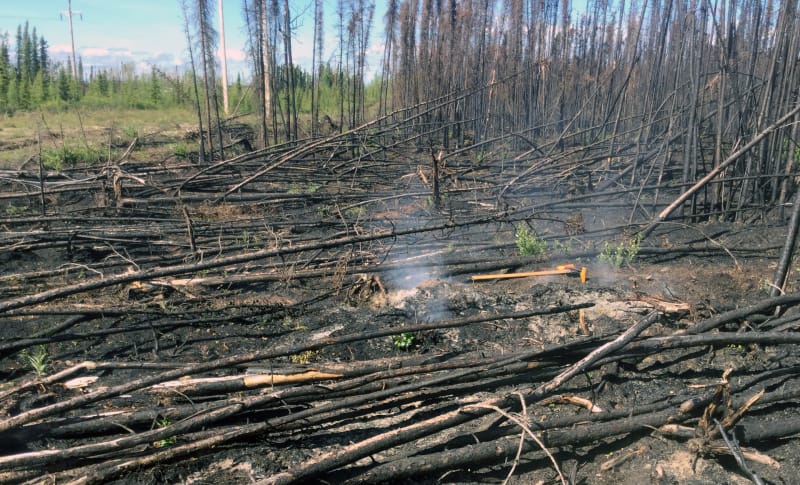Zombie Fires Threaten Arctic Land and Climate
Re-emerging fires that survived the winter may contribute to record burning and CO2 emissions.

At the end of June 2020, Alaska firefighters were called to put out a fire in Kenai National Park. This wasn’t the first time workers had to deal with this fire, however--the late June blaze was the remnant of the Swan Lake Fire that burned for four months in 2019. It was a so-called zombie fire.
In the past few months, scientists have seen evidence of zombie fires across the Arctic, fires that live underground during the winter and reignite when warmer temperatures dry out the land. Zombie fires, or holdover fires, are not a new phenomenon. Jessica McCarty, assistant professor at the Miami University Department of Geography, says that what’s new is seeing them spark earlier in the year. The concern is that these fires reignite massive blazes from 2019 or contribute to drying out Arctic land, making it more fire-prone. We may already be seeing results: Fires burning in the Arctic Circle already released more CO2 in June than any other time recorded by the Copernicus Atmosphere Monitoring Service (CAMS).

What makes these zombie fires so persistent is that they burn either down into the ground or laterally across the ground, surviving on the little oxygen that makes it through layers of snow, McCarty explains. Then, when the snow melts and the land dries, the flare starts to come back to the surface.
It was at the beginning of May that Mark Parrington, a senior scientist at CAMS, noticed a couple of red hot spots in Siberia through satellite imagery. The spots were appearing early in the year and roughly over where fires had burned in 2019. He is quoted in a press release saying that, “The Arctic Circle regions most affected by fires in 2019 were experiencing warmer and drier surface conditions, providing the ideal environment for fires to burn and persist.”
"We're reaching the point of a very flammable surface"
This year’s heat has set the stage for that perfect fire environment: Siberia experienced 100-degree temperatures for the first time last month. These fire environments demonstrate the danger of a feedback loop with zombie fires. McCarty points to research showing that peat systems which have already burned may be more prone to burn again since the fuel (read: peat) around the area has already dried out. Research in the Environmental Research Letters on Alaskan peatlands examined how forests recovering from a fire could contain less permafrost, making them more vulnerable to burning again.

Siberia saw record blazes last month that may have been stoked by previous year’s fires. By the end of June, a Russian forest fire management agency estimated 3.4 million acres of forest were burning across Siberia in nearly 200 different fires. This is not a normal amount of fire. CAMS, which measures fires in terms of CO2 released, found that the Arctic Circle fires released more CO2 last month than they have ever recorded in their 18 years, more than the previous record-breaking year in 2019.
The takeaway for the outdoors community? Put out your campfires. Last year, hikers on the Arctic Circle Trail started a fire in Greenland, something that could easily be avoided with a bit more cognizance and fear of the zombie fire. “We’re reaching the point of a very flammable surface,” McCarty says.
Cover Photo: Smoke rises from a hot spot in last year’s Swan Lake Fire scar on the north side of the Sterling Highway on Tuesday, June 16, 2020. Passing motorists reported the smoke and firefighters from the Kenai/Kodiak Area forestry station responded to extinguish the hot spot. Photo by Dan White/Alaska Division of Forestry.





Comments ()